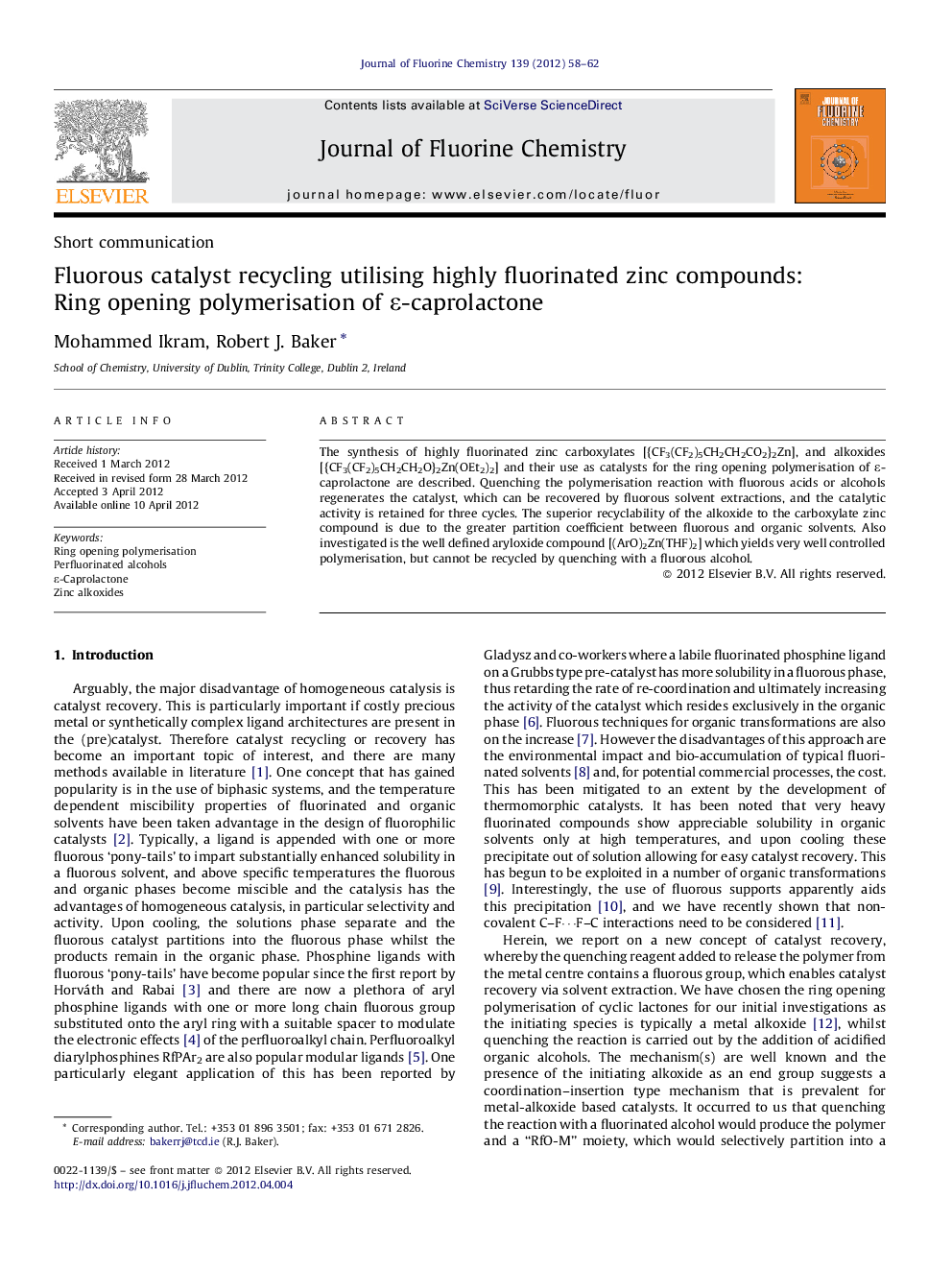| Article ID | Journal | Published Year | Pages | File Type |
|---|---|---|---|---|
| 1314912 | Journal of Fluorine Chemistry | 2012 | 5 Pages |
The synthesis of highly fluorinated zinc carboxylates [{CF3(CF2)5CH2CH2CO2}2Zn], and alkoxides [{CF3(CF2)5CH2CH2O}2Zn(OEt2)2] and their use as catalysts for the ring opening polymerisation of ɛ-caprolactone are described. Quenching the polymerisation reaction with fluorous acids or alcohols regenerates the catalyst, which can be recovered by fluorous solvent extractions, and the catalytic activity is retained for three cycles. The superior recyclability of the alkoxide to the carboxylate zinc compound is due to the greater partition coefficient between fluorous and organic solvents. Also investigated is the well defined aryloxide compound [(ArO)2Zn(THF)2] which yields very well controlled polymerisation, but cannot be recycled by quenching with a fluorous alcohol.
Graphical abstractRecycling strategies for a zinc catalysed ring opening polymerisation of caprolactone have been explored. The use of fluorous alkoxide compounds of zinc and quenching with a fluorous alcohol allows the catalyst to be recycled three times before loss of activity.Figure optionsDownload full-size imageDownload as PowerPoint slideHighlights► Fluorinated zinc alkoxides can be readily prepared. ► Ring opening polymerisation of caprolactone catalysed by zinc alkoxides. ► Catalyst recovery using a fluorous quench technique.
